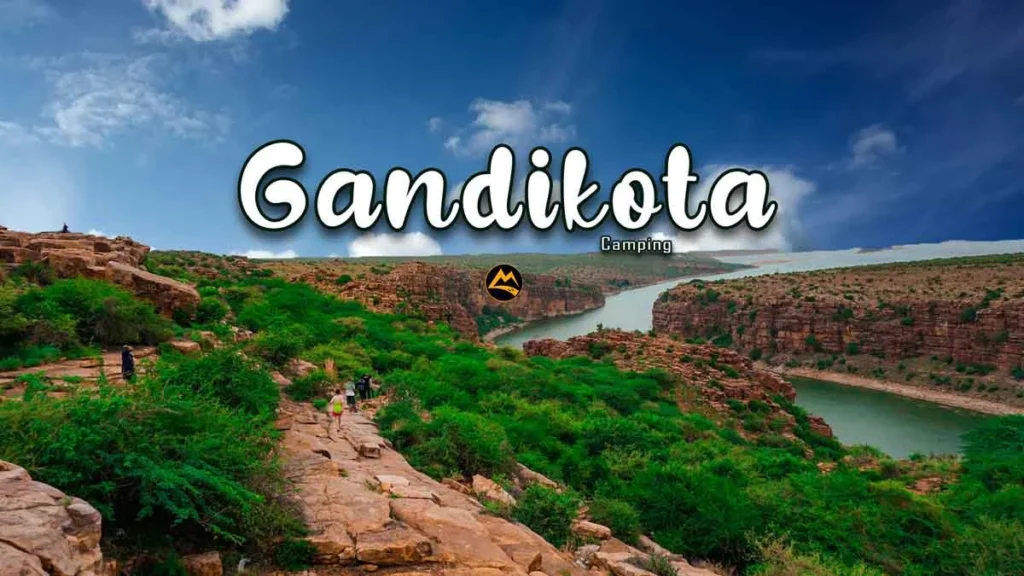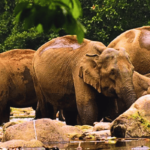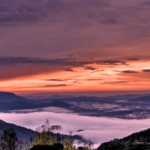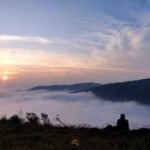Gandikota Timings:
Monday | 12:00 am – 12:00 am |
Tuesday | 12:00 am – 12:00 am |
Wedesday | 12:00 am – 12:00 am |
Thursday | 12:00 am – 12:00 am |
Friday | 12:00 am – 12:00 am |
Saturday | 12:00 am – 12:00 am |
Sunday | 12:00 am – 12:00 am |
Gandikota Fort Entry Fee:
INR 50 for Indians and INR 300 for foreign nationals, A guide will come along with you
History of Gandikota:

Gandi means cannon, and Kota means fort. Discovered in 1132 AD by a subordinate of King Chalukya, the place was initially a mud fort before being taken over by the Khilji kings and later by the kings of Vijayanagara. The fort, surrounded by a deep valley and massive red granite rocks, served as a natural defense. Over time, it became one of the largest forts in southern India, ruled by the Mikkilineni dynasty of Bharadwaja gotra, part of the Kamma clan. Known for their fierce nature, the Kammas defended the land alongside the Pemmasani kayakers and Vijayanagar army commanders. The fort’s strategic position played a significant role during the Kakatiya, Vijayanagara, and Qutub Shahi periods. Famous Telugu poet Vemana is believed to have lived in the area briefly. Despite its past glory, the fort eventually fell into ruins with the decline of empires.
How to Reach Gandikota?
Gandikota is easy to get to from big cities like Bangalore and Hyderabad. The closest airports are in Bangalore (285 km away) and Tirupati (220 km away). If you’re coming by train, you can hop off at Tirupati or Jammalamadugu stations, which are nearby.
By Road:
You can drive to Gandikota using NH 7, which connects it to major cities like Bangalore, Hyderabad, and Vizag. Andhra Pradesh’s roads are in great shape, so you’ll have a smooth ride.
By Train:
The closest train stations to Gandikota are Jammalamadugu (18 km away), Kadapa (77 km away), and Tirupati (219 km away). You can also catch a direct train from Bangalore.
By Air:
If you’re flying in, the nearest airports are in Tirupati and Bangalore. From there, you can take a bus or a private taxi to Gandikota. Bangalore airport is about 345 km away (a 6-hour drive), and Tirupati airport is about 220 km away (a 4.5-hour drive).
Best time to visit Gandikota:

Summer (March – June):
The summer season in Gandikota starts from March and lasts until June. March is still okay for sightseeing, but as you move into April, the temperature starts to soar, reaching its peak in May and June. It can get really hot, up to around 40°C! The high temperatures, scorching heat, and humidity can make exploring a bit tough. So, it’s not the best time to visit Gandikota, but some people still go for vacation. If you’re one of them, make sure to pack light cotton clothes to stay comfortable.
Temperature range: Between 26°C and 37°C.
Monsoon (July – September):
The monsoon season starts around July and lasts until September. While it doesn’t rain a lot during this time, the temperatures remain high. The rain does bring the temperature down a bit, but the humidity sticks around. August usually gets the most rain, but otherwise, it’s not too bad. You can still go sightseeing and enjoy your time here, but it’s a good idea to check the weather forecast before you go.
Temperature range: Between 23°C and 32°C.
Winter (October – February):
The best time to visit Gandikota is during the winter season, from October to February. The monsoon season moves away by the end of September, leaving behind pleasant weather. Winter here isn’t too cold, and the maximum temperature stays comfortable. You can explore all the top attractions without any problems. It does get a bit chilly in the evenings, so bring along some jackets and sweaters for a cozy stay in Gandikota.
Temperature range: Between 19°C and 30°C.
Overall, the winter season is the most favored time to visit Gandikota, offering the most pleasant weather for sightseeing and outdoor activities
Things to do at Gandikota:

Adventure Sports:
Take a walk through the gorge and climb the rocks for a different perspective. If you’re into water activities, try kayaking or boating on Lake Rayalacheruvu behind the fort. For an adrenaline rush, consider cliff jumping into the Pennar river. If you prefer something more relaxed, go for a coracle ride or take a dip in the river.
Sunrise & Sunset over Gandikota Fort:
Catch the breathtaking sunrise and sunset views from the viewpoint overlooking the beautiful Pennar river. The orange rays reflecting on the gorge create a magical scene. The ancient temple ruins and mosque add to the charm of the experience.
Camp next to Gorge under the Stars :
Set up your camp near the Gandikota fort, on the rocks, or by the lake. Enjoy a barbecue and then lie down on the grass to gaze at the stars. Consider bringing a telescope to get a closer look at the planets. Just remember to bring plenty of mosquito repellent for those outdoor nights.
Tourist places to visit near Gandikota:

Here are some other nearby tourist places you can explore when visiting Gandikota:
Belum Caves:
Located 43 km from Yeganti, between Nandyal and Tadipatri in Kurnool district, Belum Caves are one of India’s most historic sites and the second-largest caves in the country. These massive structures stretch over 3230 m and feature vast chambers, fresh-water galleries, siphons, and extended passages. The caves, believed to be millions of years old, were formed by erosion in limestone deposits by the Chitravati River. The prime attraction is a massive Buddha statue near the caves, and it’s said that Buddhist monks once used the caves for meditation. AP Tourism has made it easy for visitors to access the caves, and there’s even a resort nearby for those looking to stay close.
Yaganti Temple:
Located in the Kurnool district, not far from Gandikota, Yaganti is famous for its Sri Yagantiswamy Temple, one of the biggest Lord Shiva temples in the region. This ancient temple, believed to have been built in the 5th and 6th centuries, is adorned with contributions from various kings and emperors, including the Vijayanagara Kings Harihara & Bukka Rayalu. Surrounding architecture completed during their reign adds to the temple’s grandeur.
Owk Reservoir:
Situated around 10 km from Belum Caves, the Owk Reservoir is a dam built across the Paleru River near Owk in Andhra’s Kurnool district. Constructed in 1946, it comprises three smaller dams and serves as a primary source of irrigation for the Rayalaseema region. The reservoir also offers boating facilities in its backwaters, attracting tourists seeking leisurely activities.
Mylavaram Dam:
About 11 km from Gandikota, the Mylavaram Dam is an irrigation project built across the Pennar River in Andhra’s Kadapa district. Also known as the Tatireddy Narasimha Reddy Reservoir, this dam was constructed to fulfill the irrigation and water needs of an extensive area. Completed in the 1980s, the dam offers a serene setting for visitors to enjoy the surrounding landscape and learn about its significance in water management.
Author - Jay
Jay is a passionate traveler and a Digital Marketer, The digital marketer traveler embarks on journeys to explore new cultures, seeking inspiration for creative online campaigns that resonate with diverse audiences worldwide
Dandeli Tour Packages, Munnar Tour Packages, Gokarna Murudeshwar Honnavar Tour, Kodiakanal Tour Packages , Kotagiri and Conoor Tour Packages, Coorg Tour Packages, Ooty Tour packages, Wayand Tour Packages, Chikmagalur 2 days tour packages, Agumbe Tour Packages, Malvan Scuba Diving, Coorg Long Weekend Tour Packages, Mulki Kayaking Packages.
Sikkim Tour Packages(6D/5N), Nagaland Tour Packages with Dzukou Valley, Meghalaya Tour Packages(No Trekking), Hornbill Festival Tour With Dzukou Trek- Nagaland (6D/5N), Nagaland Backpacking Trip With Dzukou Valley Trek (6D/5N), Meghalaya Backpacking Trip(6D/5N), Tawang Backpacking Trip (7D/6N), Sikkim Backpacking Trip (6D/5N), Tawang Private Trip, Kaziranga National Park Safari (2D/2N),



